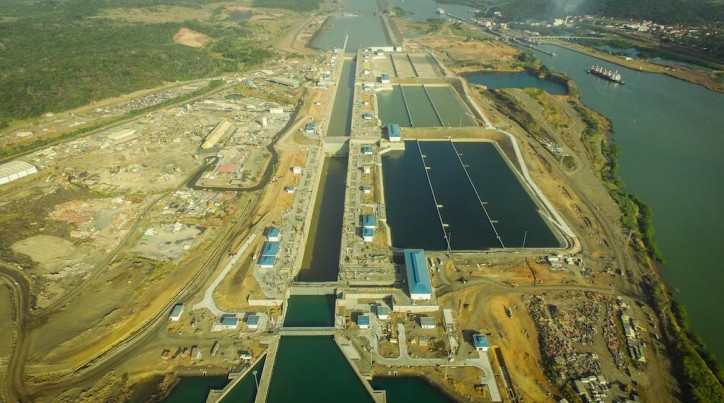The Panama Canal Authority (ACP) announced that it is training over one thousand workers on the operations of the new locks of the Panama Canal Expansion. Once these first training phase is completed, the courses will be standardized and offered to additional members of the workforce.

The training of Panama Canal workforce is a requirement under the new locks’ contract. The different project’s subcontractors, responsible for the electromechanical equipment, will offer the courses. Hyundai, manufacturer of valves and accessories, and Bosh Rexroth, supplier of the valves’ hydraulic cylinders, motors, and controls, will offer training courses. Training has already been provided on high-mast lighting, fenders within the chambers, bridge cranes, and the controls of the new locks’ equipment.
The Neo Panamax vessels, the newly expanded locks will have three different types of valves controlling water flow, including the following:
- Main culvert valves: These valves control the water flow from Gatun Lake to the upper chamber, through the locks chambers, and finally to the ocean. Each lock complex has 32 of these valves.
- Water-saving basins valves: These valves control the water flow from the new locks to the water-saving basins. Each lock complex has 32 of these valves.
- Water equalization valves: These valves regulate the water flow between the new locks’ chambers and the rolling gates. Each lock complex has eight of these valves.
Panama Canal personnel participating in this training include: future operators and lockmasters of Agua Clara (Atlantic) and Cocoli (Pacific) Locks, as well as engineers, systems reliability, and information technology personnel. Human resources instructors will also attend the courses as they become certified in offering these courses to other Canal workers.
The Canal’s workers are critical to the ACP’s ability to provide reliable, efficient, and safe service. Fundamental to their success is the continuous training the Canal provides, as well as the deep sense of teamwork it instills, all while ensuring that the highest safety standards are maintained.
Source: Panama Canal Authority